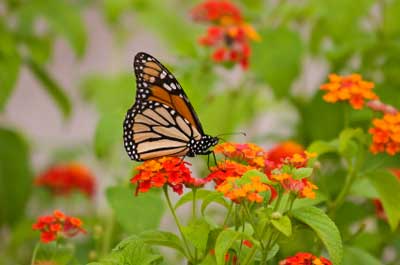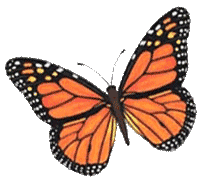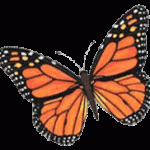Written by Richard Blankenship
There are many popular landscape trends to consider this spring when you are ready to upgrade your outdoor living space. Major projects might include an outdoor fireplace, outdoor kitchen space, pergola, new deck or paver surface. However one of my favorite and less expensive projects is a simple butterfly garden.
Butterfly gardens are predominately perennial gardens incorporating plants and elements butterflies need for their high energy life cycle. This life cycle includes egg, larvae, pupa, and adult all in one year. So finding the right plants that satisfy their demands for food, shelter, mating and reproduction are critical for success.
First – Look at SPACE
The first item to be determined is the space. The area doesn’t have to be monumental but should be large enough to offer a variety of perennials and shrubs, and an area that gets more than a half day of sunshine. Butterflies are most attracted to plants that like to grow in sunny locations and offer an abundance of color. I like to find areas near a deck, pool or patio so that frequent interaction with this gentile, flittering insect becomes part of the allure. The next step would be to prepare the soil with a rich compost material and add a general purpose fertilizer to the soil prior to planting.
Seond – Prepare the Soil
Once you have determined the space for your garden and prepared your soil you are ready to select and install your plantings. Beyond Buddliea (Butterfly Bush), I like to use as many native shrubs and perennials as possible. Along with being great butterfly magnets they are perfect for our Indiana soils and climate. The plant pallet should include a variety of plants that will offer year round interest and seasonal color, and have few insect problems since insecticides are deadly to butterflies and should be planted in small masses. It is important to remember that although butterflies are around in early spring and summer they are most active during latter parts of summer and into late fall. Plants such as Panicle Hydrangeas, Asters, Rudbeckia, Joe Pye Weed, Iron weed, and sedums should find space in the garden. Other elements to consider adding to the garden include several flat stones so butterflies have a place to rest and warm themselves and also a shallow water source. This can be accomplished by providing a small bucket of sand with water, an old bird bath top, or a large stone with a depression that will hold water.
A well placed and thought out garden can offer years of enjoyment and pleasure with minimal maintenance and keep these wonderful whimsical insects coming back year after year. It is one of Mother Nature’s great rewards to spend a late summer day on the deck or patio observing these graceful creatures as they move about the garden. Reminding one that gardening is fulfilling in many ways.
Third – Enjoy
When spring arrives and outdoor projects begin to show up on your radar, consider updating that ugly space you have been staring at all winter by inviting these flying guests with this colorful display of trees, shrubs and perennials.
I have included a short list of trees, shrubs and perennials that are great for the overall life cycle of the butterfly and should be considered when developing your garden.
Butterfly Attractors
- Amelanchier (Serviceberry)
- Celtis (Hackberry)
- Hamamellis (Witch-Hazel)
- Lindera (Spicebush)
- Viburnum dentatum (Arrrowood)
- Aesclepias (Milkweed)
- Aster
- Carex (Sedge)
- Coreopsis
- Echinacea (Cone Flower)
- Monarda (BeeBalm)
- Solidago (Goldenrod).


